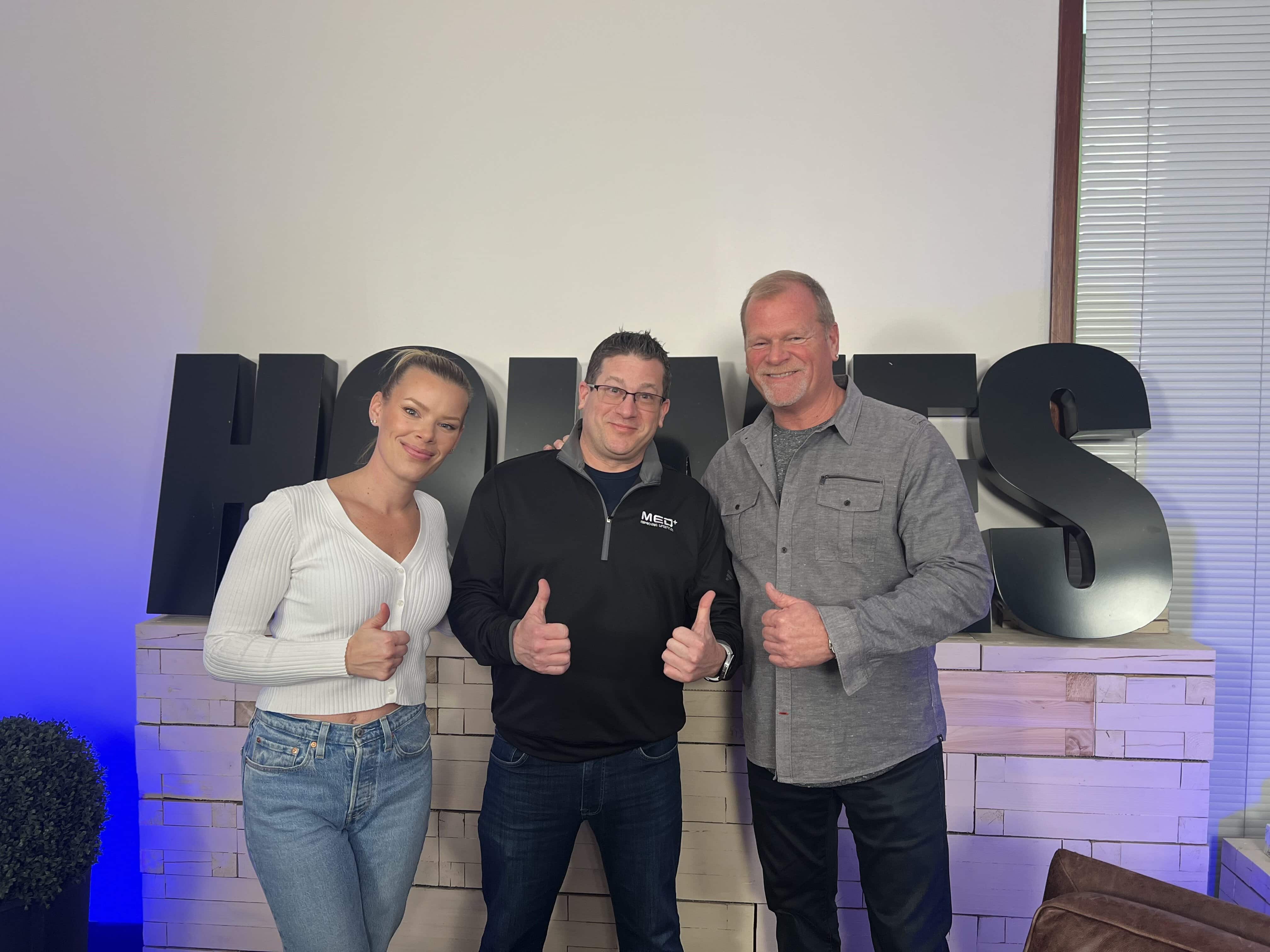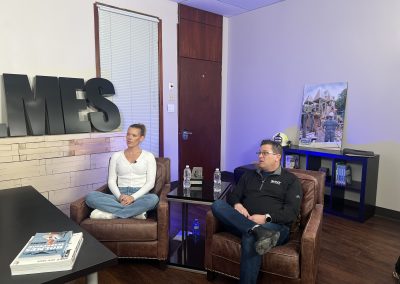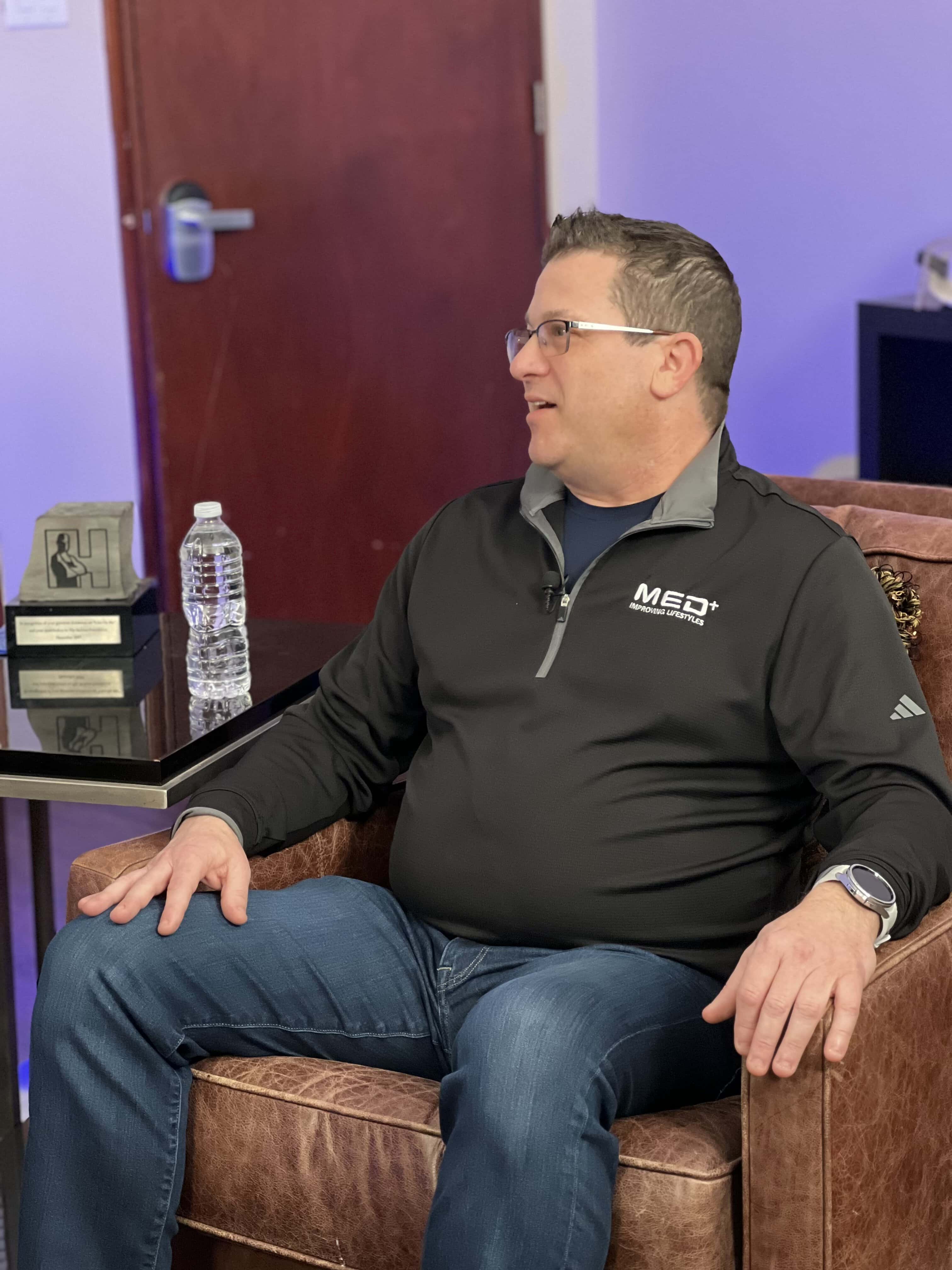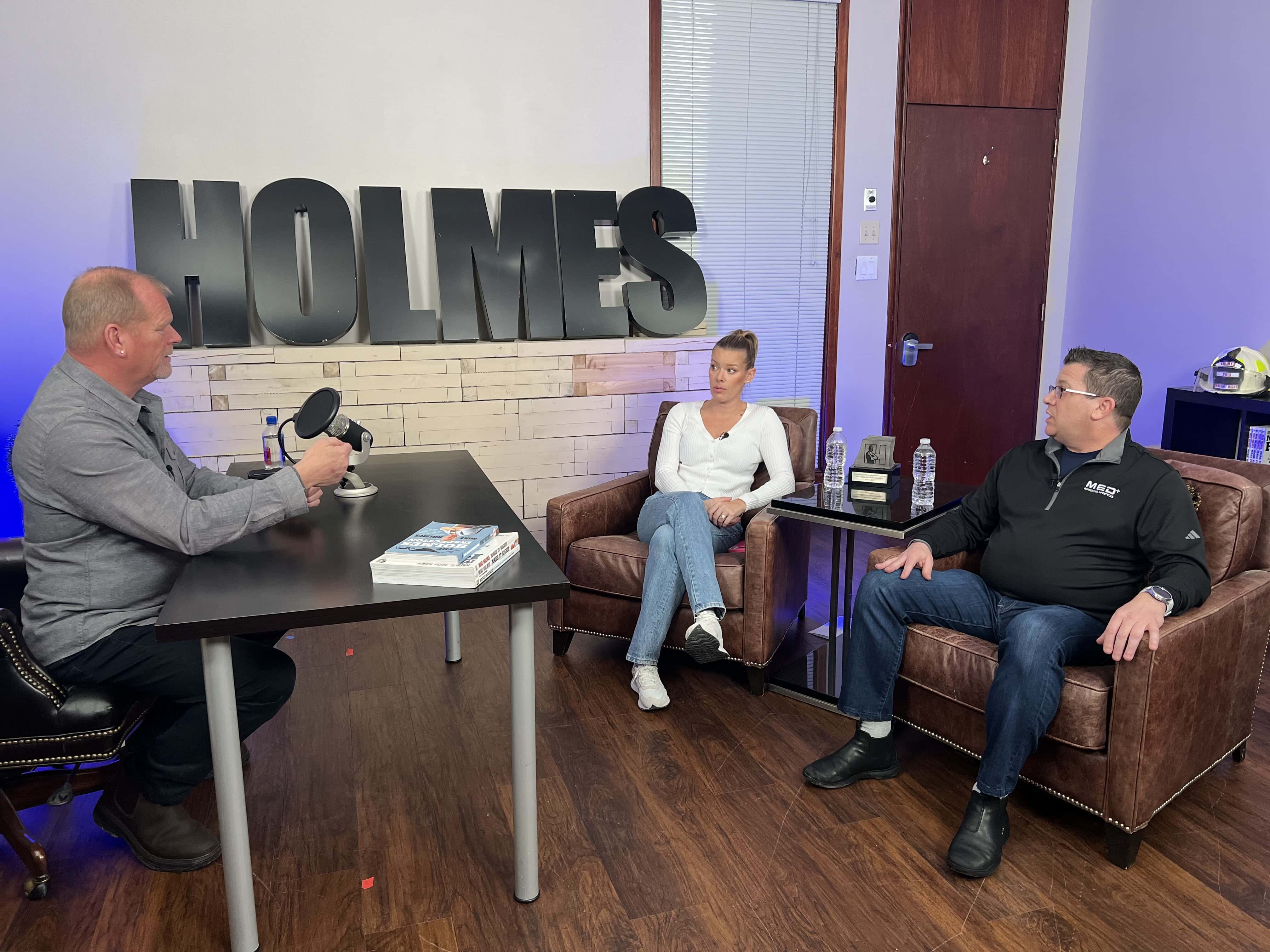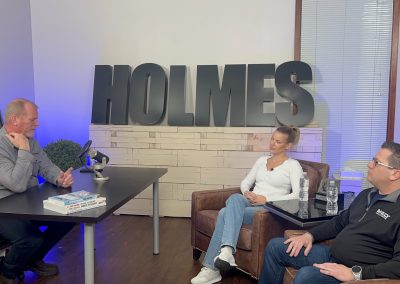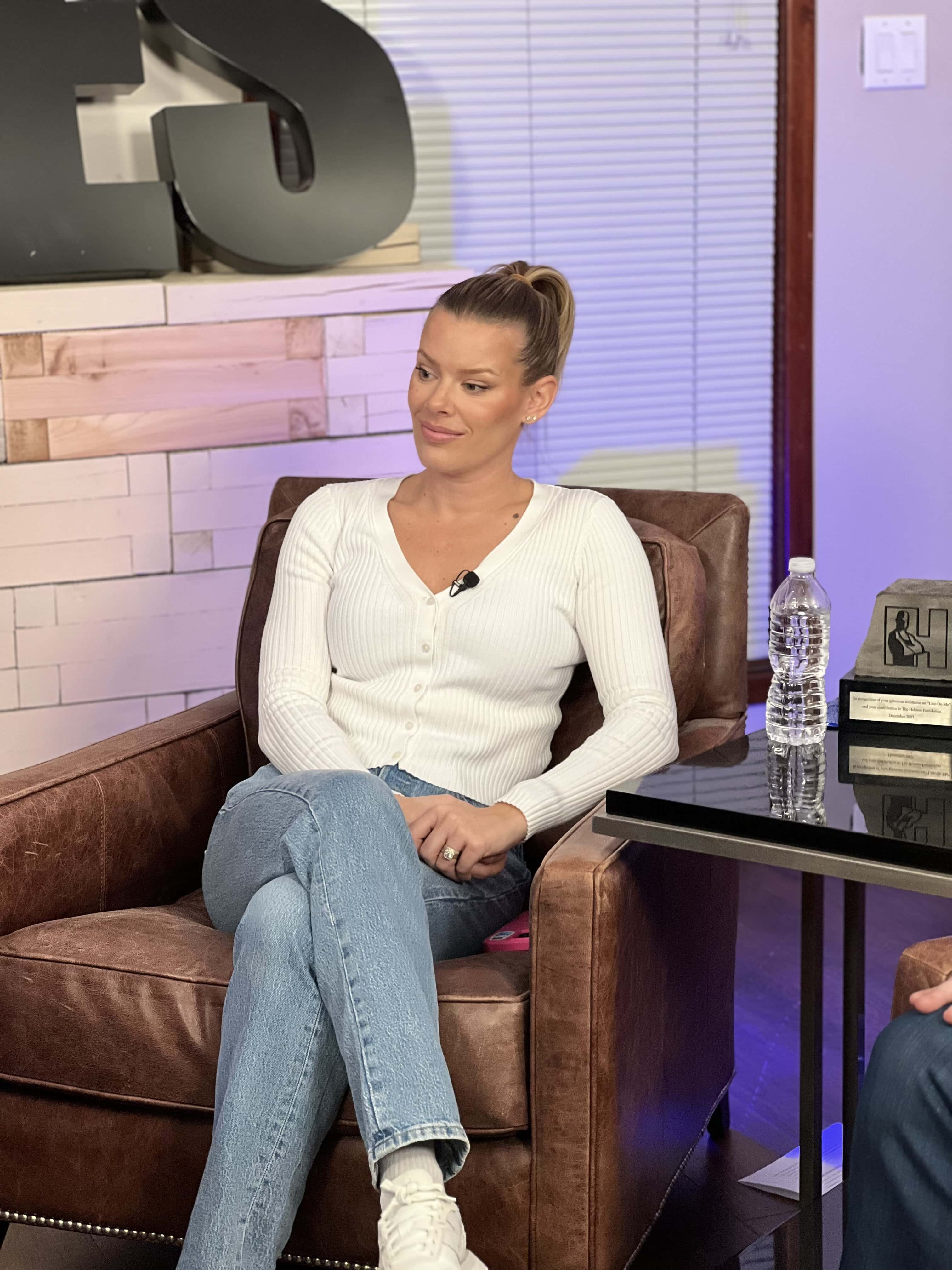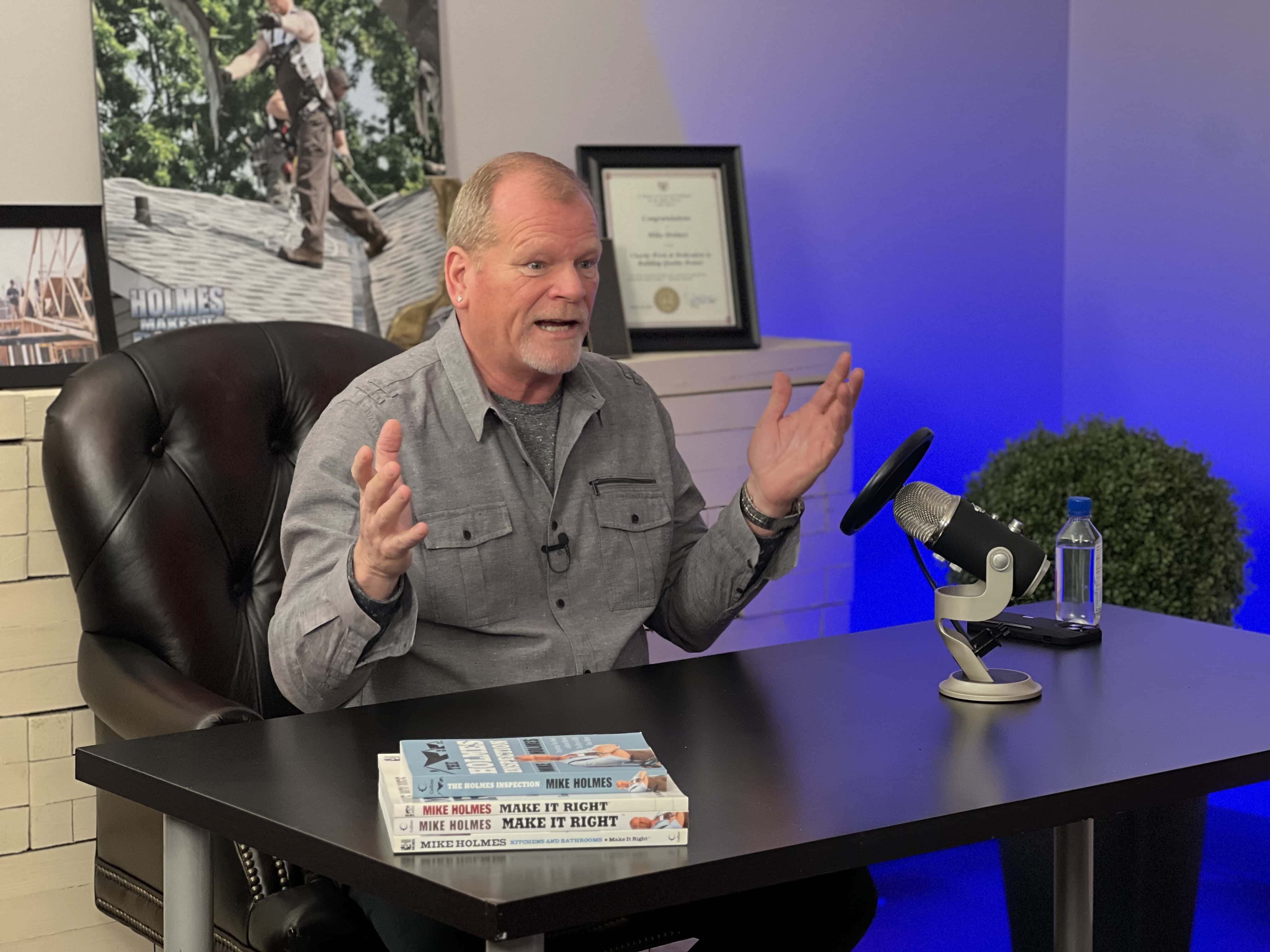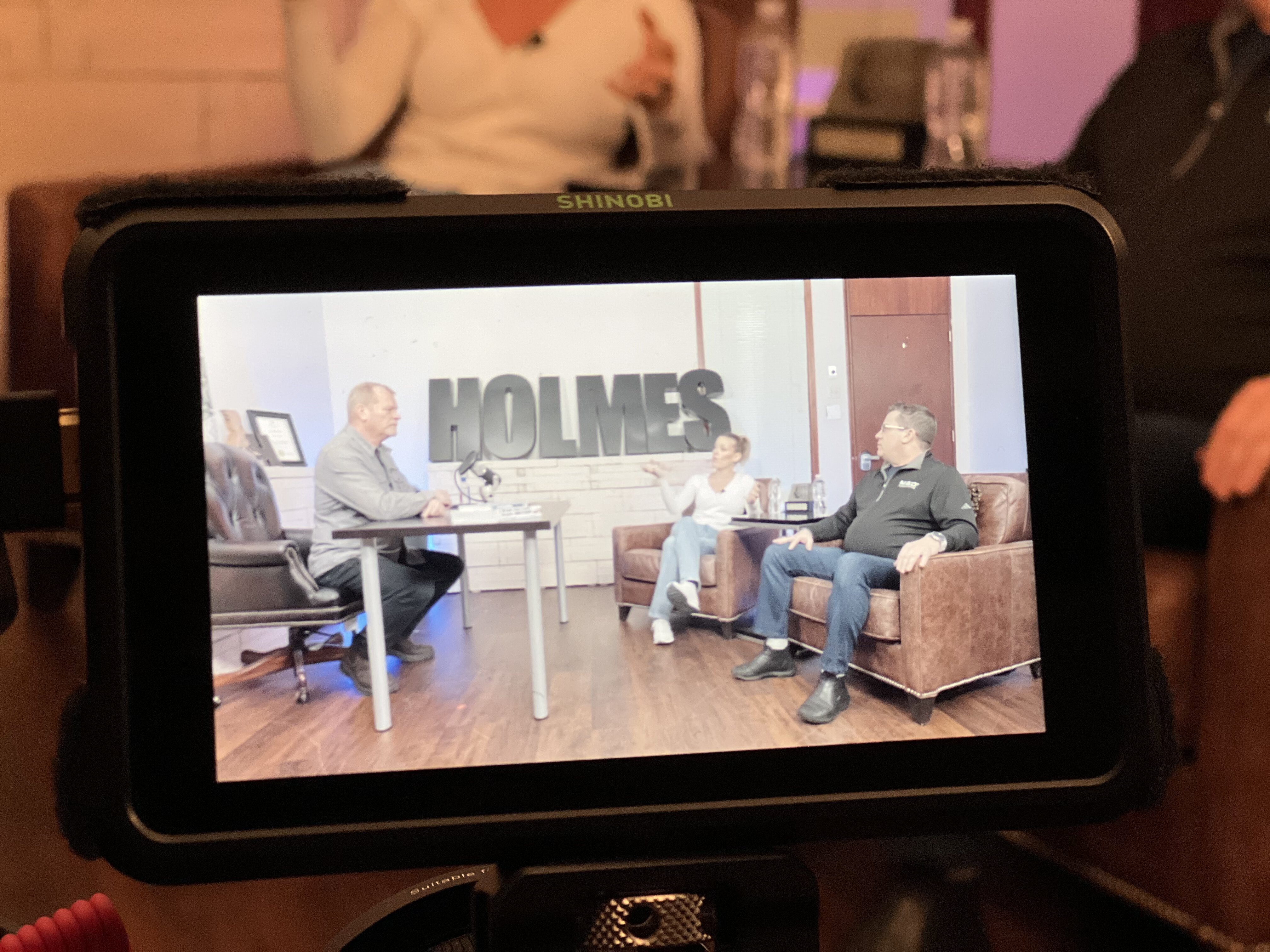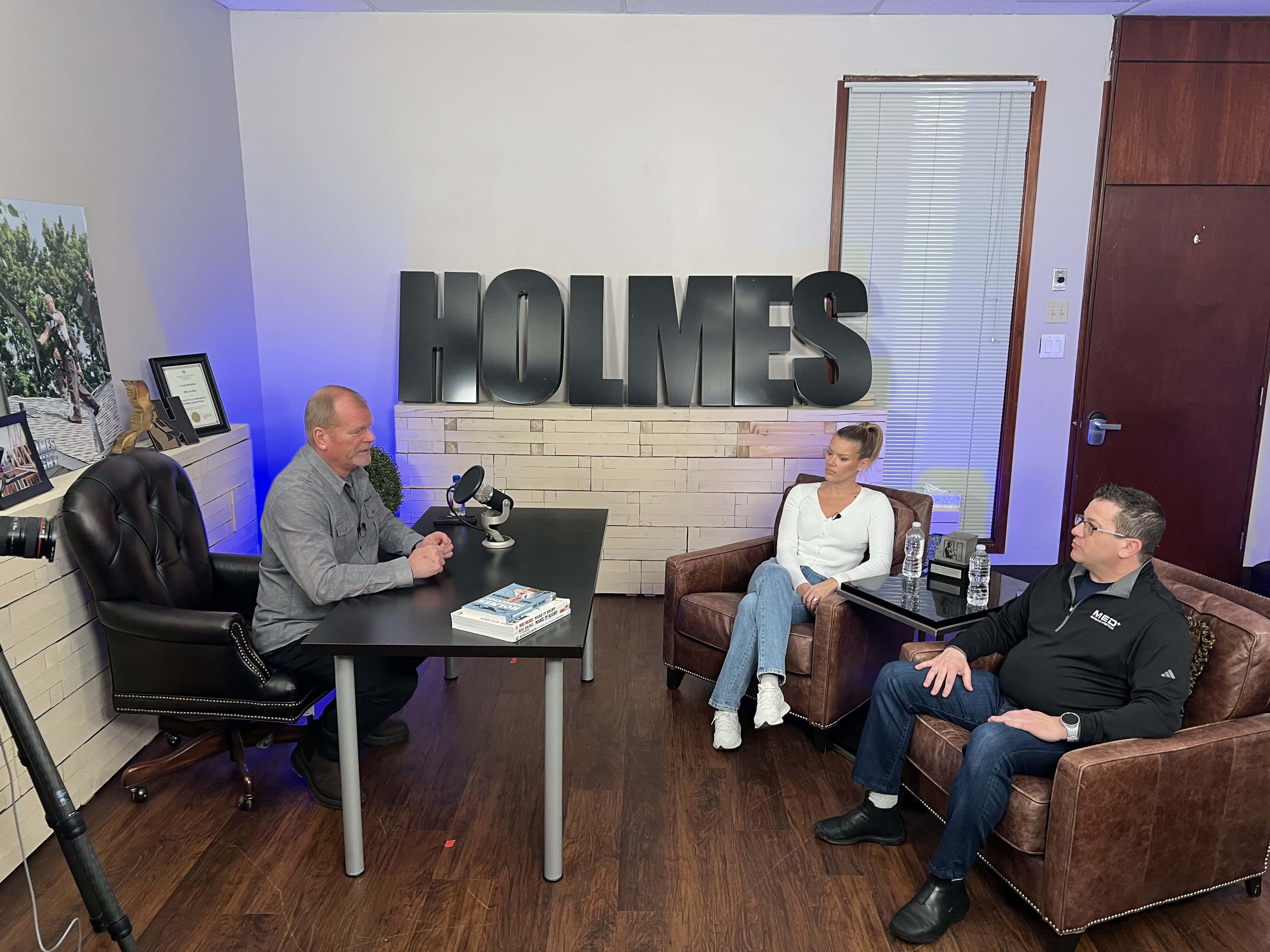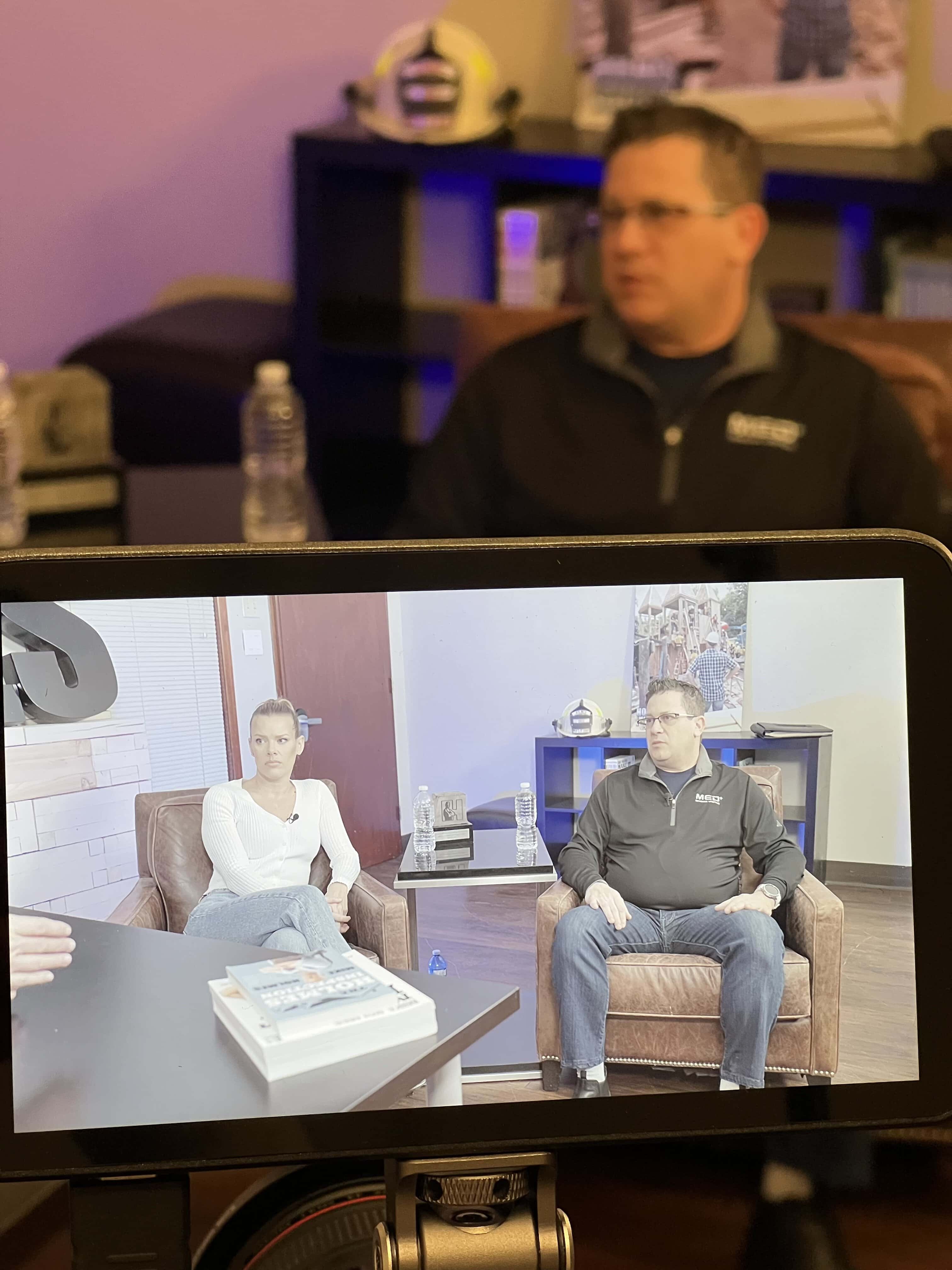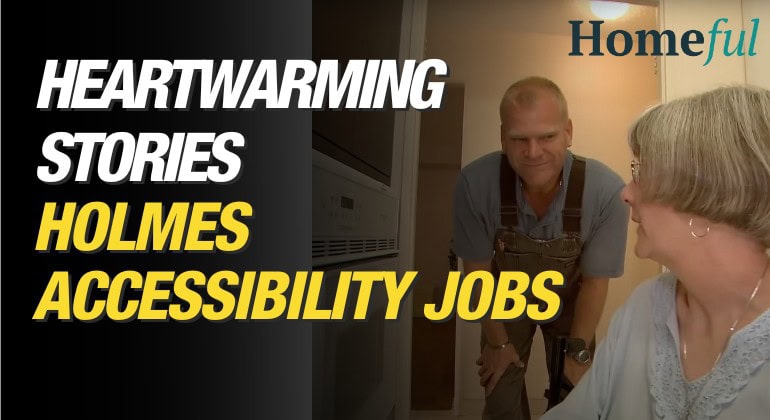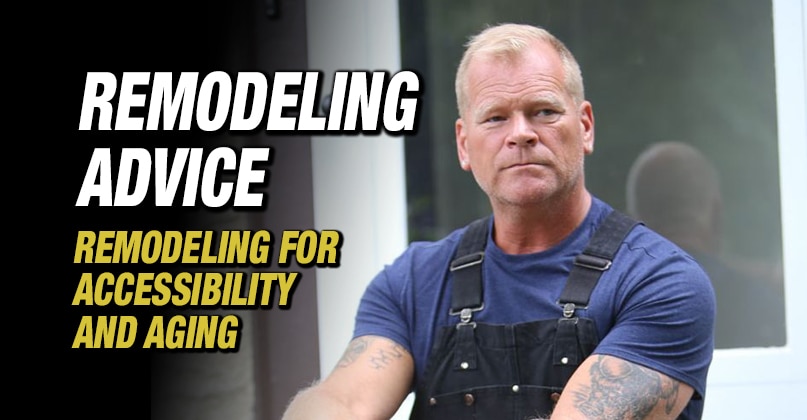
Holmes on Homes Podcast with Mike Holmes: Season 5 – Episode 2
How Do You Make a Home Wheelchair Accessible? Must-Have Modifications & How to Find the Right Contractor
What are the best wheelchair accessible home modifications? How do you make a home wheelchair accessible on a budget? The best wheelchair-accessible home modifications include ramps or vertical lifts for entry, wider door frames, and durable flooring for both comfort and safety.
On this episode of the Holmes on Homes Podcast, Mike Holmes is joined by his daughter Sherry Holmes as they sit down with Ronny Wiskin, Accessibility Specialist at MED+ Health, to break down the best options for creating a wheelchair-friendly home. They’ll explore the key features that every accessible home should have, what to look for when buying an accessible home, and common mistakes homeowners make when it comes to DIY projects and hiring the wrong contractors.
But that’s not all—code considerations for things like ramps, how to handle insurance payouts, and working with the right professionals are just as critical. We’ll discuss these challenges and provide expert tips on how to tackle them head-on.
What if you could transform your home to make it wheelchair accessible without costly mistakes or lengthy delays? Tune in to find out how the right approach can make all the difference.
SPECIAL GUESTS
MED+ Health is a trusted provider of home healthcare solutions, specializing in mobility aids, accessibility equipment, and medical supplies. With a focus on improving quality of life, they offer expert guidance, personalized solutions, and reliable products to support independent living and patient care. Whether it’s mobility scooters, stairlifts, or daily living aids, MED+ Health is committed to helping individuals and caregivers find the right solutions for their needs.
Ask Mike Holmes
Mike and his expert industry guests answer some of the most commonly asked questions.
1. How can I make my home wheelchair accessible?
Start with entry solutions like ramps, vertical lifts, or elevators. Inside, widen doorways to at least 36 inches, install barrier-free showers, and choose durable, non-slip flooring for safe mobility.
2. What are the essential home modifications for wheelchair users?
Wider doorways, open layouts, roll-in showers, grab bars, and adjustable counters. Flooring should be smooth, durable, and non-slip—carpets and thresholds can be major obstacles.
3. How do I choose the right contractor for accessibility renovations?
Hire a contractor experienced in accessibility renovations. They should know building codes, ADA guidelines, and how to customize modifications for your needs. Med+ Health works with contractors to ensure homes meet the right standards —we worked with them on many of our own Holmes projects.
4. What are the costs associated with making a home wheelchair accessible?
Costs depend on the project—ramps and door widening are lower-cost, while home elevators, roll-in showers, and full remodels are bigger investments. Always budget for code compliance and safety upgrades.
5. Are there financial assistance programs for accessibility home modifications?
Yes! While I’m not an expert in financial assistance programs, I always emphasize the importance of thorough research. In Canada, there are several programs designed to support accessibility home renovations. For instance, the Home Accessibility Tax Credit (HATC) offers up to $3,000 in tax credits for eligible modifications. In Ontario, the Home and Vehicle Modification Program provides up to $15,000 for necessary adaptations. Additionally, many provinces and municipalities have their own grants and loans. It’s crucial to consult local housing authorities or disability support organizations to explore all available options.
Looking for More Expert Tips and Advice?
Check out Mike’s Advice and Holmes on Homes Podcast Blog.
About the Holmes on Homes Podcast with Mike Holmes
The Holmes on Homes Podcast, hosted by Mike Holmes, seasoned professional contractor and TV host, is your go-to source for expert insights on home improvement, safety, maintenance, skilled trades, and industry innovation. Each episode features expert guests and valuable takeaways, covering everything from choosing the right materials, aging in place, and electrical safety to the future of construction with 3D printing, pondscaping, and even raising healthy pets in a healthy home.
Whether it’s renovating for accessibility, improving indoor air quality, or tackling the skilled trades stigma, Mike and his guests break it all down with real talk, hard truths, and the no-nonsense advice that’s made him a trusted name in home improvement. Because when it comes to building better, it pays to Make It Right.
With over 40 years of experience, Mike provides practical advice and industry best practices, empowering homeowners to make informed decisions. Whether you’re a first-time homeowner, professional contractor, or planning a major renovation, this podcast is your go-to source for everything home-related.
WATCH MORE EPISODES
S5 | EPISODE #1
“Why is There a Shortage of Skilled Trade Workers? How VR Training and Early Education Can Help Solve the Problem” The skilled trades industry is facing a critical shortage, but it’s not because of a saturated market. In fact, between 2016 and 2021, the number of youth aged 15 to 24 in the trades dropped by over 12% in Canada, according to Statistics Canada. And it’s not just a Canadian issue — in the U.S., the construction workforce under age 25 has also been shrinking. So, what’s really going on?
S5 | EPISODE #3
“What Are the Most Popular Aging-in-Place Remodeling Projects? Top Home Modifications for a Safe, Comfortable Forever Home” As we age, our homes need to evolve with us, and making the right modifications can help ensure your forever home is functional, accessible, and safe for the long term. So what are the best modifications for aging in place?
S5 | EPISODE #4
“Guide to Building Legal Basement Suites: Key Features, How to Attract Quality Tenants, and Tips for Success” Thinking of turning your basement into an income suite? Building a legal basement suite is a great way to generate extra income. However, it’s important to understand the difference between legal and illegal basement suites, especially when it comes to compliance with local building codes and safety requirements.
S5 | EPISODE #5
“Could 3D Printing Solve Big Problems in Construction—Faster & Cheaper” Imagine turning construction waste into functional products like stepping stones and garbage cans. What about printing a custom home retrofit piece in hours instead of weeks? Shockingly, according to the OECD, only 9% of plastic is actually recycled, with a staggering 49% ending up in landfills. That’s not right!





